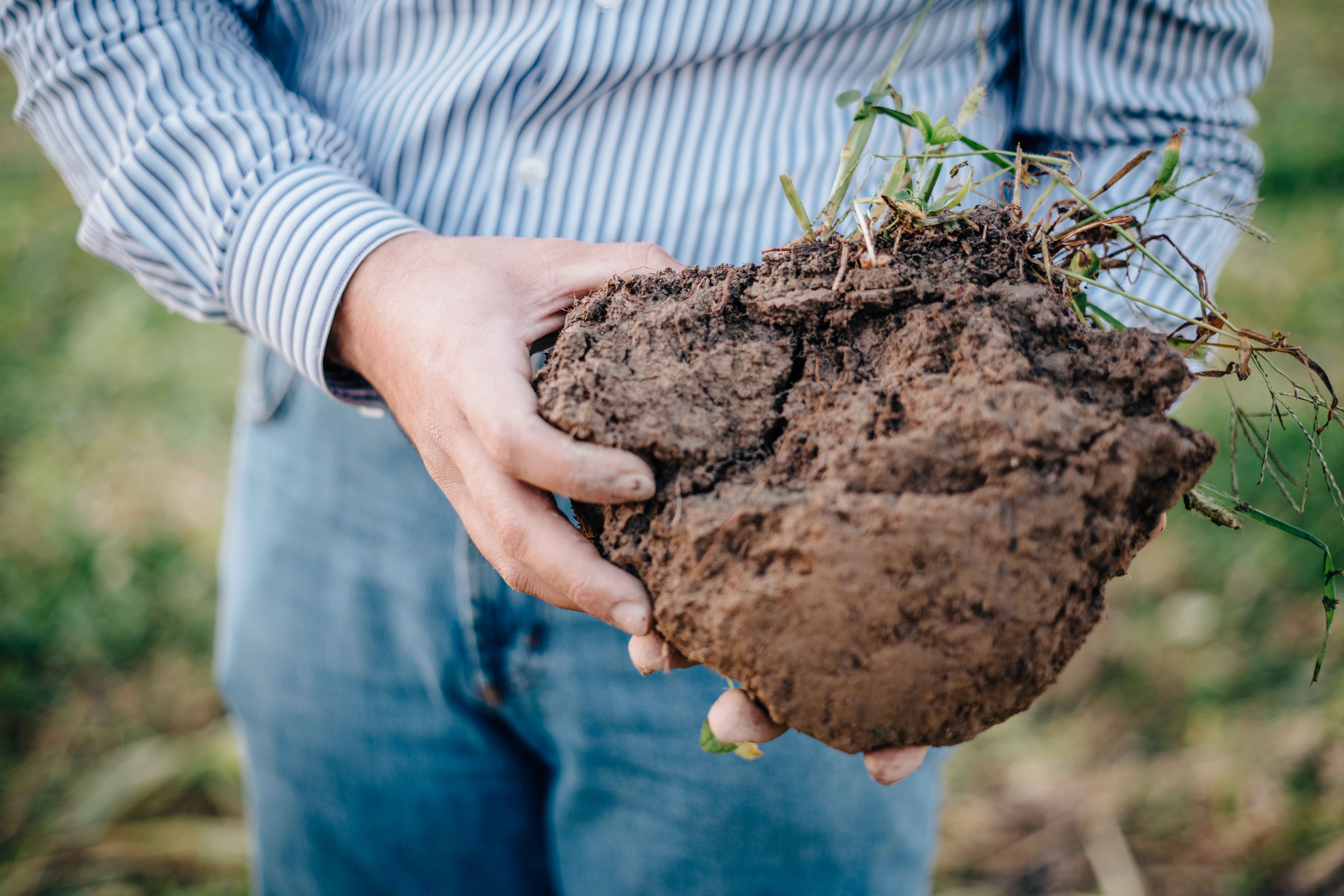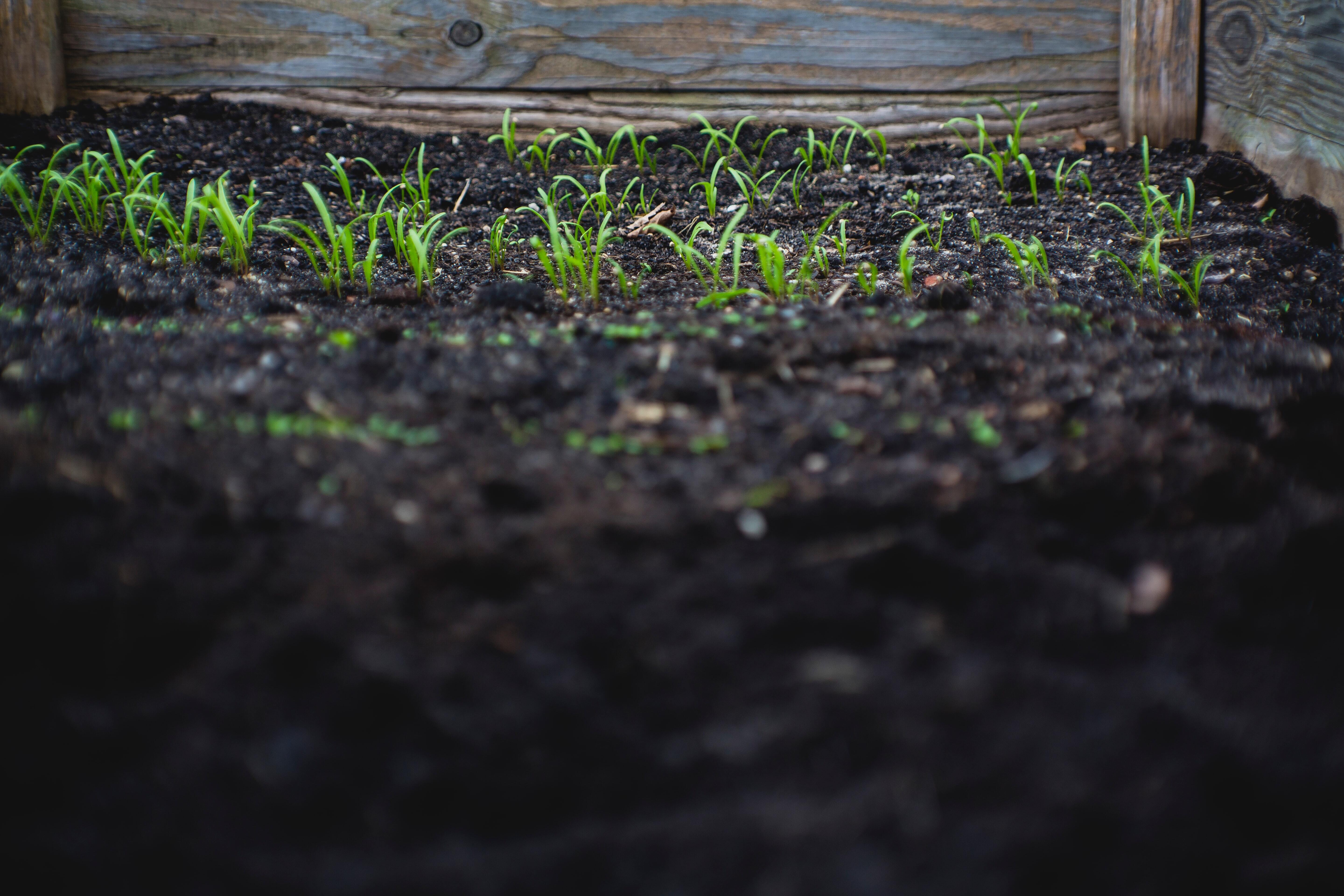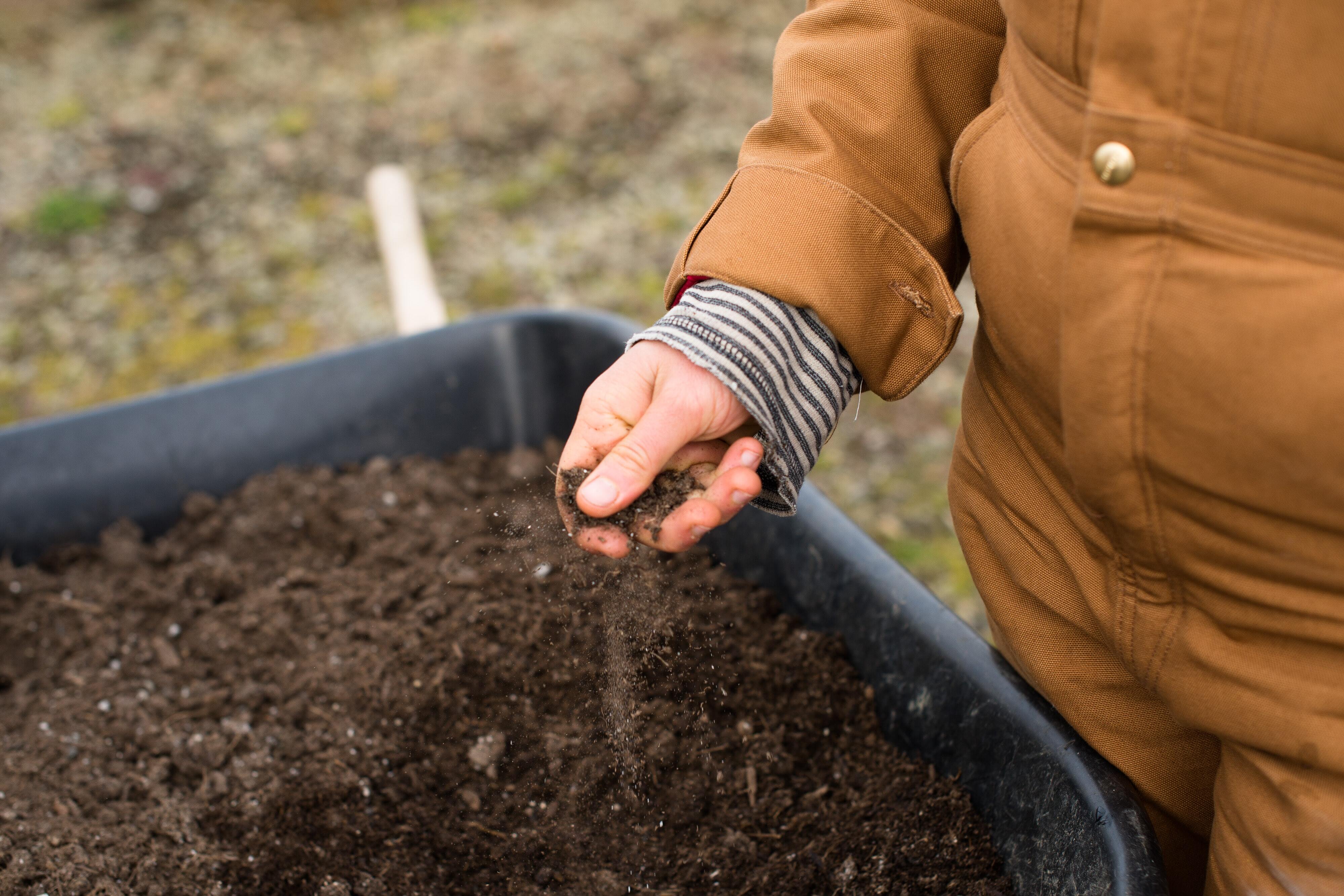Soil as a basis: Physical, chemical and biological fertility

Soil is a key element in the agrosystem, especially from a regenerative agriculture point of view. However, its importance is often overlooked, as we don’t see what is happening directly and also because it happens on a microscopic scale.
As a result of the Green Revolution and the introduction of new agricultural techniques, there was an increase in crop productivity and therefore in the availability of food for a growing population.[1] However, it also brought with it a series of consequences detected after a few years, such as the loss of biodiversity, loss of soil, or in short, loss of soil fertility understood as chemical, physical and biological fertility.[3]
Faced with this recognition of the limitations of the Green Revolution, certain associations, groups, institutions and administrations put on the table the need to seek alternatives to reverse the situation and limit the undesirable consequences.[3]
Part of this change is based on the development and functioning of a fertile and living soil. Attempts made to regenerate and recover soil from the degradation it has suffered in the last decades,[2] which has led to an imbalance, with a lack of life and nutrients, and with numerous negative consequences for crops and the environment in general.
In this sense, to try to achieve this objective, regenerative agriculture aims to achieve a good balance between the 3 M’s: minerals, microbiology and organic matter, and of course, achieving an adequate soil structure that will help to reach this balance.
There are different soil management techniques carried out in the field of Regenerative Agriculture in order to achieve greater fertility. Before listing them and commenting in more detail on each of them, we must know and understand what soil is, and how the different actors in the soil relate to each other.
Understanding the soil
Soil is an ecosystem that contains mineral particles in different forms, water, air, organic matter, and a set of living beings that interact with each other in balance and harmony with their environment, such as bacteria, fungi, arthropods, roots, and plant remains. The aim is to have a fertile, living and balanced soil.
In the broad sense of the word, the level of fertility of a soil will depend mainly on its structure, porosity*, texture, level of organic matter, mineral content, and biodiversity.
 Photo by Markus Spiske on Unsplash
Photo by Markus Spiske on Unsplash
A good structure gives the soil porosity, i.e. allows adequate water and oxygen content at root level. The presence of moisture, and above all oxygen, favours the proliferation of organisms and microorganisms in the soil, creating optimal conditions for biosynthesis* processes to take place, and favouring the exchange of soluble substances at the level of the rhizosphere*, which is the area around the plant roots where microorganisms live in symbiosis with the plants.
It should be noted that the lack of aeration in the root zone increases the level of amino acids and their proportion in the plant tissues, which is not positive for plant health.[3]
Therefore, a balance must be found between air and water content, so that there is no deficiency of one element or the other. A soil with low porosity and lack of oxygen is a dead and inert soil. Cultivation techniques that cause soil compaction, or clay-textured soils with poor drainage, tend to lead to an imbalance, causing root asphyxia that not only affects the plant directly, but also indirectly by favouring the appearance of certain phytopathogenic fungi that can damage plants at root level.
Soil structure is conditioned by:
- its texture, i.e. its percentage of clay, silt and sand particles;
- the quantity and quality of organic matter;
- by the type of soil work carried out; and
- above all by the work done by the roots and the microorganisms that live in the soil.
Let’s look in detail at each of these aspects.
Texture is a very familiar concept, as it is determined in practically all cases when soil analysis is carried out. Loamy textures are the most balanced, but they don’t always guarantee a good structure, although it is easier to achieve a good structure.
On the other hand, clay or loam textures, although they are generally more fertile soils from a chemical point of view, tend to have drainage problems and root asphyxia. Finally, sandy textured soils tend to be poorer soils, with a lower water retention capacity, and with problems due to excessive washing.
Regarding organic matter, in conventional agriculture it has not been given special importance, and has been considered mainly as an organic amendment in really poor soils, for the purpose of structural improvement of the soil, but not from the point of view of a source of nutrients for plants and microorganisms.
There are many types of organic matter, among which humus* is the most stable and structurally complex fraction. To give a picture of what humus is, it could be described as the dark, mushroom-scented blanket under leaf litter in forests. A sufficient quantity is desirable, as it is primarily responsible for good soil structure. It has the ability to bind with clay particles to form what is known as the clay-humic complex, thus building a good soil foundation.
Humus, apart from participating in the soil structure, when it decomposes and undergoes mineralisation processes thanks to the intervention of microorganisms, makes available nutrients that serve as food for plants. It is therefore of utmost importance to maintain adequate levels of humus, as it is vital for soil structure and fertility. In that sense, humus decomposition is favoured in warm and humid climates, especially if the soil is frequently ploughed*.
Regarding ploughing, its prime purpose is to turn over the uppermost soil, but this action doesn’t improve its structure, but rather destroys it, and leads to mineralisation of organic matter. The soil is generally worked to prepare it for sowing* or planting, or to control undesirable spontaneous vegetation.
What really improves soil structure are earthworms, arthropods, microorganisms and plant roots. Therefore, the aim should be to encourage their development, including that of spontaneously developing plants, as long as they do not cause damage to the crop, since it must not be forgotten that this is an economic activity.
*Porosity: gaps between soil aggregates that can be filled with water or air.
*Biosynthesis: production of a chemical compound by a living organism.
*Rhizosphere: area around a plant root that is inhabited by a unique population of microorganisms influenced.
*Humus a dark-brown or black organic substance made up of decayed plant or animal matter.
*Plough: large farming tool with blades that digs the soil in fields so that seeds can be planted.
*Sowing: plant (seed) by scattering it on or in the earth.
The importance of living soils
The organic compounds produced by soil microorganisms favour the development of a good structure, stabilising the aggregates and favouring the processes described above. But the role of microorganisms is not only vital for the correct development of the structure, but also for the key role they play in making mineral elements available to the plants. It’s important to note that they intervene through their secretions, their ability to chelate* certain elements, and their influence on the behaviour of trace elements in the soil.[4]
This balance of microorganisms will be favoured by the organic matter in the soil, which has a strong buffering effect. Moreover, as the structure is improved, the water retention capacity of the soil is increased, which is always positive in a scenario of increased crop evapotranspiration*.
It also leads to an increase in the cation exchange capacity*, and therefore the chemical fertility of the soil. If we ignore the important role of organic matter and add synthetic mineral fertilisers, we are favouring a greater absorption of nutrients than the plants need. This excess of minerals in the soil solution usually leads to collateral problems for the plants, as we favour a greater development of pests and diseases that feed on this excess for the functioning of their metabolism.
 Photo by Zoe Schaeffer on Unsplash
Photo by Zoe Schaeffer on Unsplash
In order to achieve a minimum desirable organic matter content, correct organic fertilisation must be carried out. The application of manure or other composted organic waste not only increases the level of organic matter in the soil, but also directly provides certain macro and micronutrients essential for plants (iron, zinc, manganese, boron) that favour plant development and resistance. It also has a growth stimulating effect thanks to various organic compounds such as humic substances, acids or phenols, with direct and indirect repercussions on plant metabolism.
Lastly, it’s important to note that replacing mineral fertilisation by organic fertilisation in order to meet crop needs in terms of target yields is relatively complex. The main reason for this is the multitude of factors that can affect the mineralisation process, and thus the availability of mineral elements to the plants. It’s difficult to control how much, how and when this mineralisation will occur, as meteorology plays a key-role, especially in rainfed crops. In this sense, there is still a lot of research to be done to understand the processes involved in more detail, and to try to improve organic fertilisation strategies.
But a first step is to know what’s being provided, knowing the origin and quality of the organic matter used, and carrying out a prior analysis of the organic amendment / fertiliser to calculate more accurately the doses to be applied, over a cycle of several years.
*A chelate: an agent that creates multiple bonds with a metal ion, such as zinc or iron. It may also bond with minerals such as nitrogen, potassium, or phosphorous, all of which are important elements for a plant’s health.
*Cation exchange capacity: measure of how many cations can be retained on soil particle surfaces.
*Evapotranspiration: loss of water from the soil both by evaporation and by transpiration from the plants.
*Cation exchange capacity: measure of how many cations can be retained on soil particle surfaces.
Share this

Reach your personal and professional goals
Unlock access to hundreds of expert online courses and degrees from top universities and educators to gain accredited qualifications and professional CV-building certificates.
Join over 18 million learners to launch, switch or build upon your career, all at your own pace, across a wide range of topic areas.
Register to receive updates
-
Create an account to receive our newsletter, course recommendations and promotions.
Register for free








